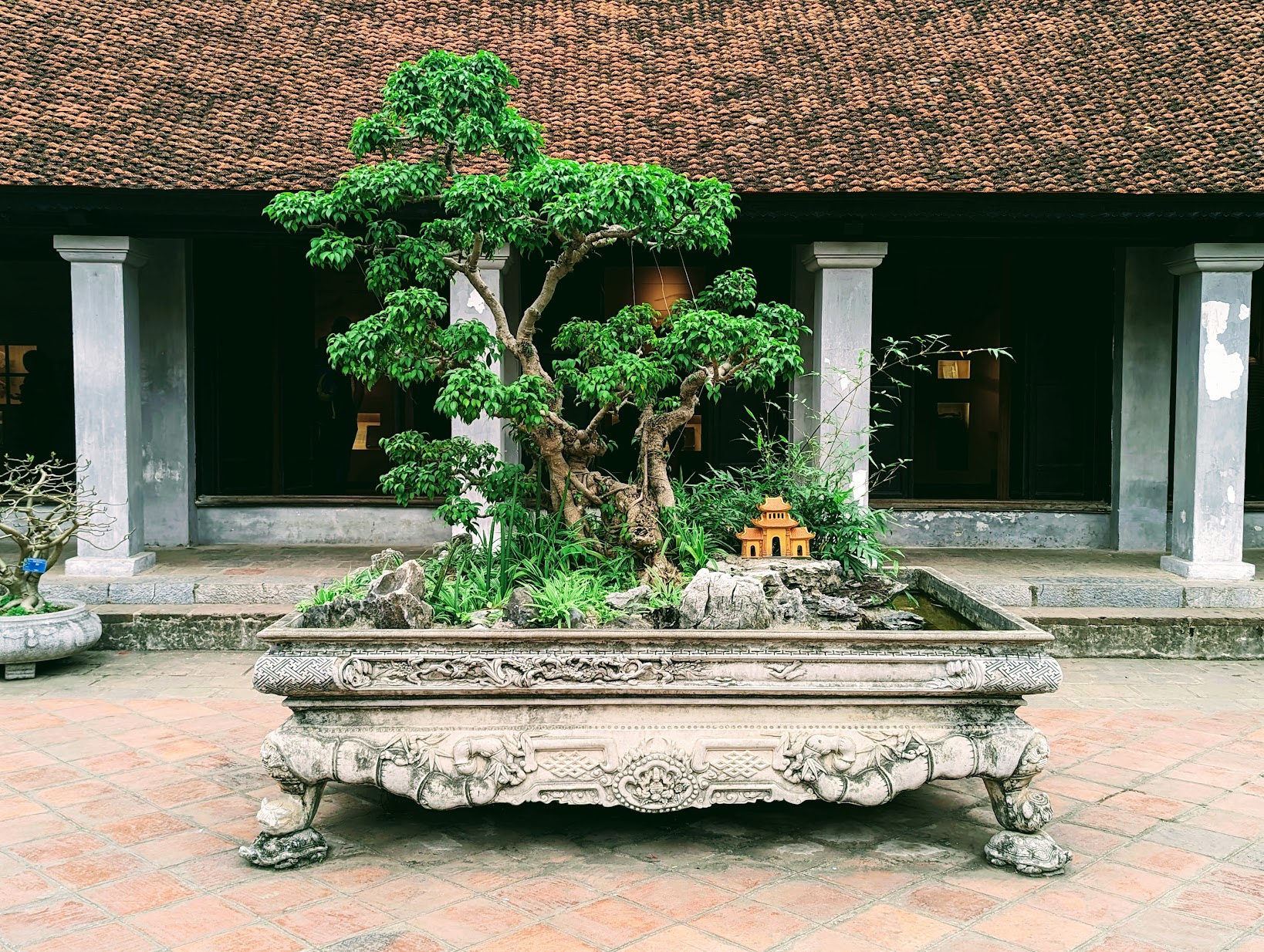
Văn Miếu
The Temple of Literature in Hanoi, which hosts the Imperial Academy (Quốc Tử Giám, 國子監), is Vietnam’s first national university, and was an incredible experience for us. Built in 1070 at the time of Emperor Lý Thánh Tông, the temple is a great tour by any standard. But it’s even more amazing when you’re touring it with friends of the family who run the marketing and events for the sacred site. The insight and personal perspective we were lucky enough to experience from our generous hosts made for an unforgettable day at this historic temple.


The Five Courtyards
Beyond the Great Gate, as you enter the complex, you enter the first courtyard of the temple. Divided into five separate courtyards, the first courtyard has three paths to choose from. The center path, of course, was for the monarch, while the left side was designated for administration, and the right side for the military.
The second courtyard, also known as the courtyard of great success, houses the Khuê Văn pavilion. Built in 1805, and a symbol of present-day Hanoi, the structure is a work of art, incredibly detailed and beautiful up close. It’s also a great backdrop for a picture!
The third courtyard is really serene and beautiful. It houses the Thiên Quang well, which takes up a large portion of the courtyard. There are also halls on both sides which house a number of stone steles, including the doctors’ steles. The Steles are blue stone turtle statues carved with the names and birthplaces of all 1307 graduates, from 82 separate royal examinations.
The fourth courtyard is the ceremonial courtyard where you will find beautiful altars to Confucius and his disciples. There were ceremonies going on while we were there, and it was very cool to stop and take it in.

The Imperial Academy
The fifth courtyard is where the academy is located. The organization of instruction and learning at the Imperial Academy began under the Lý dynasty and was further developed in the 15th century under the Lê dynasty.
This was our favorite courtyard as the buildings that housed the academy are full of incredible exhibits that detail the history of the school and the people of different periods who shaped it. It also displays the uniforms and instruments that were used at the Academy, along with other interactive exhibits that add to the experience.
Many of the buildings in the fifth courtyard are rebuilt versions after much of the older halls were destroyed in 1946 during the First Indochina War.
Royal Examination
To attend the academy was very prestigious, so much so that the ultimate goal of passing was being quizzed by the monarch himself. The typical student would study for anywhere between three and seven years. If they passed their quarterly exams, they would qualify to sit for a national exam. And if the students completed all of those levels, they successfully qualified to take the ultimate examination from the reigning monarch. How nerve-wracking that must have been!
Called the Đình Examination, and held at the Royal court, the monarch not only asked the questions but also assigned grades to the students, including failing students whose answers were not satisfactory.



